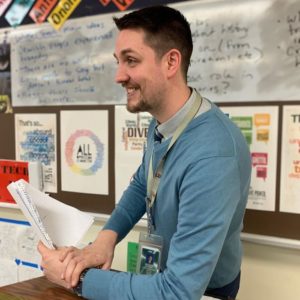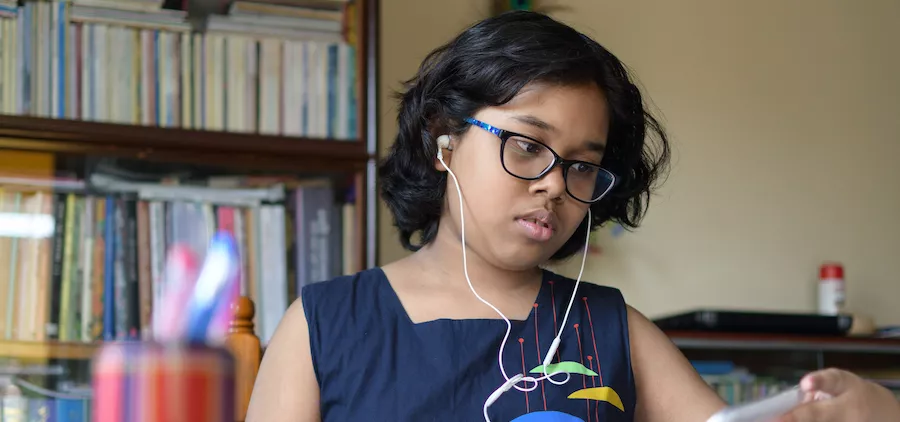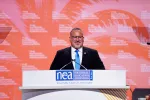Staying home due to the coronavirus has been tough. Days have morphed into weeks that blurred into months. Even as some schools and businesses reopen, stress and anxiety is mounting. And, unfortunately, the coronavirus revealed a glaring reality—that many people in our country lack the advantages that others enjoy and may even take for granted.
“If there’s a silver lining in all of this, it’s that people nationwide are really starting to understand the vast inequities in our country and in education,” says Jordann Lankford, who works with many American Indian students in the Great Falls Public Schools in Montana.
“Low-income communities and people of color were hit much harder by the pandemic, which wasn’t surprising to those of us already aware of the precariousness of their regular lives.”
Telework and distance learning? Not possible without internet, computers, or mobile devices. Walks after dinner? Too dangerous in many areas around the country. Grocery delivery or shopping? More like waiting in line at food banks, sometimes for hours, trying to maintain social distance, and hoping there’s enough left for your family. And millions of people are without health care, adding to pandemic struggles in low-income areas.
“The COVID-19 crisis has only intensified inequities,” says Nick Schwei, an English teacher at Case High School in Racine, Wis. “African American and Hispanic residents have been far more likely to see spikes in both outbreaks and deaths from the virus. This has impacted my students directly and created a need for sensitivity from me regarding what my students are able to complete academically during this time.”
He adds, “I know my students cannot fully focus on academics while fearing for their health and safety and that of their loved ones.”
Spreading Awareness
Both Lankford and Schwei are recent participants in NEA’s Leaders for Just Schools training, where educators learn about equity gaps, implicit bias, and culturally sensitive education.
 Leaders for Just School participant Nick Schwei
Leaders for Just School participant Nick Schwei
The program focuses on the intersection of racial justice in education and understanding how to use the levers of local, state, and federal policy (specifically the Every Student Succeeds Act) to create equitable learning spaces for all students. The new program, which launched in 2019, brought together cohorts of educators who were nominated by state association presidents throughout the country.
Participants studied the concept of equity and its impact on learning environments. Upon completing the first year of the training, these member leaders were asked to encourage educators in their districts to explore biases and think about changes they could implement to make their classes and schools more equitable, inclusive, and just for all students.
Identifying Privilege
Before school buildings closed, participants would take part in “privilege walks,” where the educators line up and then take steps forward or back based on their answers to different questions.
For example, if you are the only one in your family who went to college, you would step back. If you can easily find Band-Aids that match your skin tone, step forward. If you have relied primarily on public transportation, step back. If you can show affection to your partner in public without fear of ridicule or violence, step forward. If you’d never think twice about calling the police to help with an emergency, step forward. If someone in your household ever abused substances, step back. If you studied the culture of your ancestors in elementary school, step forward. If you feel unsafe walking alone at night, step back. If you’ve never had to live without health insurance, step forward.
After all the questions are asked, Schwei says those who grew up in primarily white, middle- to upper-middle class communities were all at the front of the group. People of color from low-income communities were mostly in the back, the poorest of them backed up to the wall.
The experience is different for everyone, but as participants look around, it almost always brings tears, from those in front who didn’t realize they’d had so many advantages, and from those in back who finally felt seen and understood.
 Jordann Lankford
Jordann Lankford
The goal is not to elicit white guilt, but to create an awareness of privilege and how a lack of that privilege makes accomplishing basic things far more difficult. Challenges can include everything from a homework assignment to a college application to getting to school or work on time after a public transportation delay. It’s also about empathy and grace.
In Lankford’s community, most students have no internet access. Distance learning was composed of printed homework packets delivered and picked up from students’ houses.
Lankford’s job during the closures was making those trips, delivering food baskets, and offering support by phone.
When closures essentially cut off access to dozens of students, it was “eye-opening” for a lot of educators in the Great Falls school district, she says.
“Lack of internet or devices isn’t just a problem during a pandemic closure—these students have been trying to operate the whole time without broadband access,” Lankford says. “The pandemic has shown that when educating people of different backgrounds, you need … different ways to engage that might be out of your comfort zone.”
Prioritizing Safety
Lankford is an American Indian—affiliated with the tribes of A’aniiih (Gros Ventre) and the Little Shell band of Chippewa Cree—and teaches American Indian Studies.
“I have shared experiences with these students, and after taking the Leaders for Just Schools training, I feel better equipped to help fellow educators understand the historical traumas and the federal policies that left native people disenfranchised and disadvantaged,” she says.
 During the pandemic, Lankford hand-delivered homework packets to students with no internet access, even dropping off school materials at students job sites.
During the pandemic, Lankford hand-delivered homework packets to students with no internet access, even dropping off school materials at students job sites.
And that can impact learning in many different ways. For example, a math teacher in Lankford’s district was frustrated that a student wasn’t turning in her homework consistently and wondered if the student didn’t care. What she didn’t know was that the girl lived in a household that required police to make regular welfare checks. Lankford explained the situation and that the girl wanted nothing more than to complete her school work and do well, but she was in a challenging situation without the normal school supports.
Students’ and educators’ anxiety was at an all-time high, Lankford says. For many students who were experiencing long-term socioeconomic troubles, things just got worse. The stay-at-home orders put their parents out of work entirely. “It was heartbreaking,” Lankford says.
“Those of us who took part in the Leaders for Just Schools program can help others … be more aware of challenges of different students,” she says. “When we’re aware, we are better able to make sure they … have what they need.”






